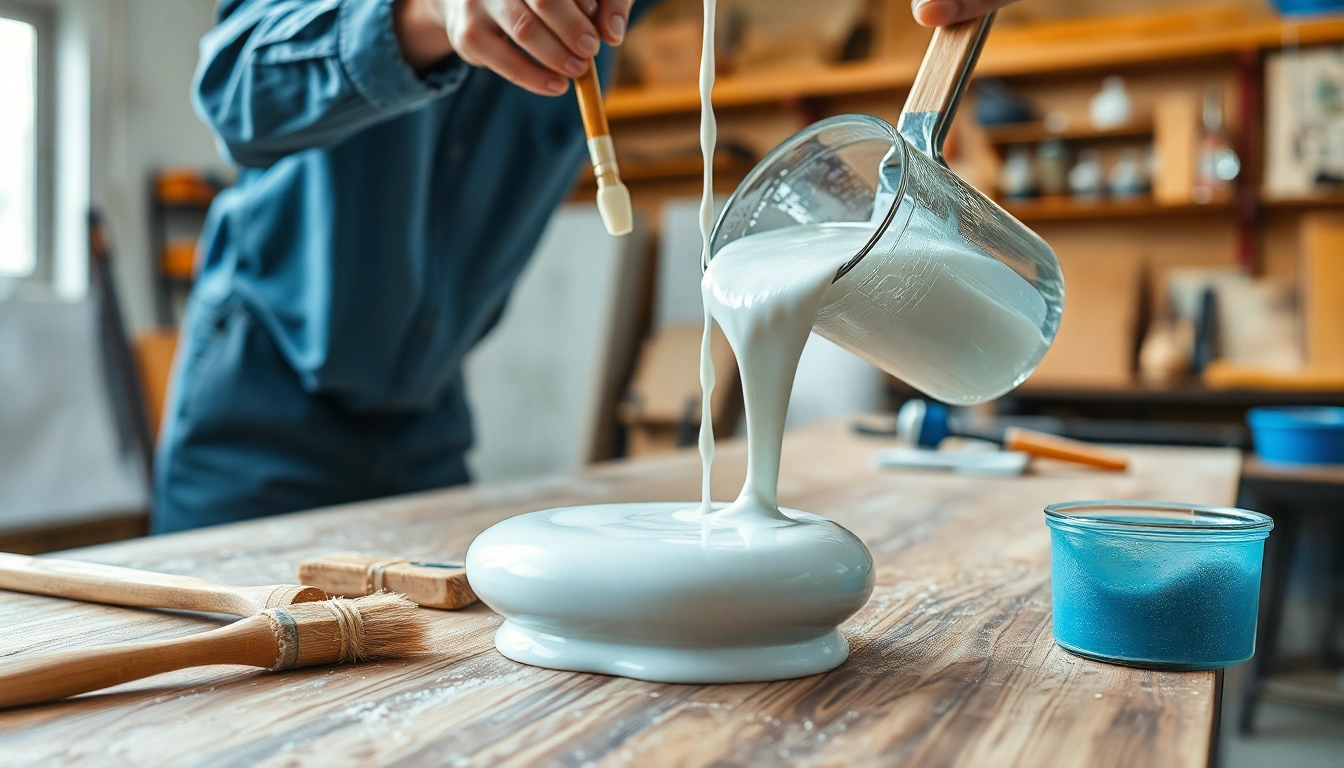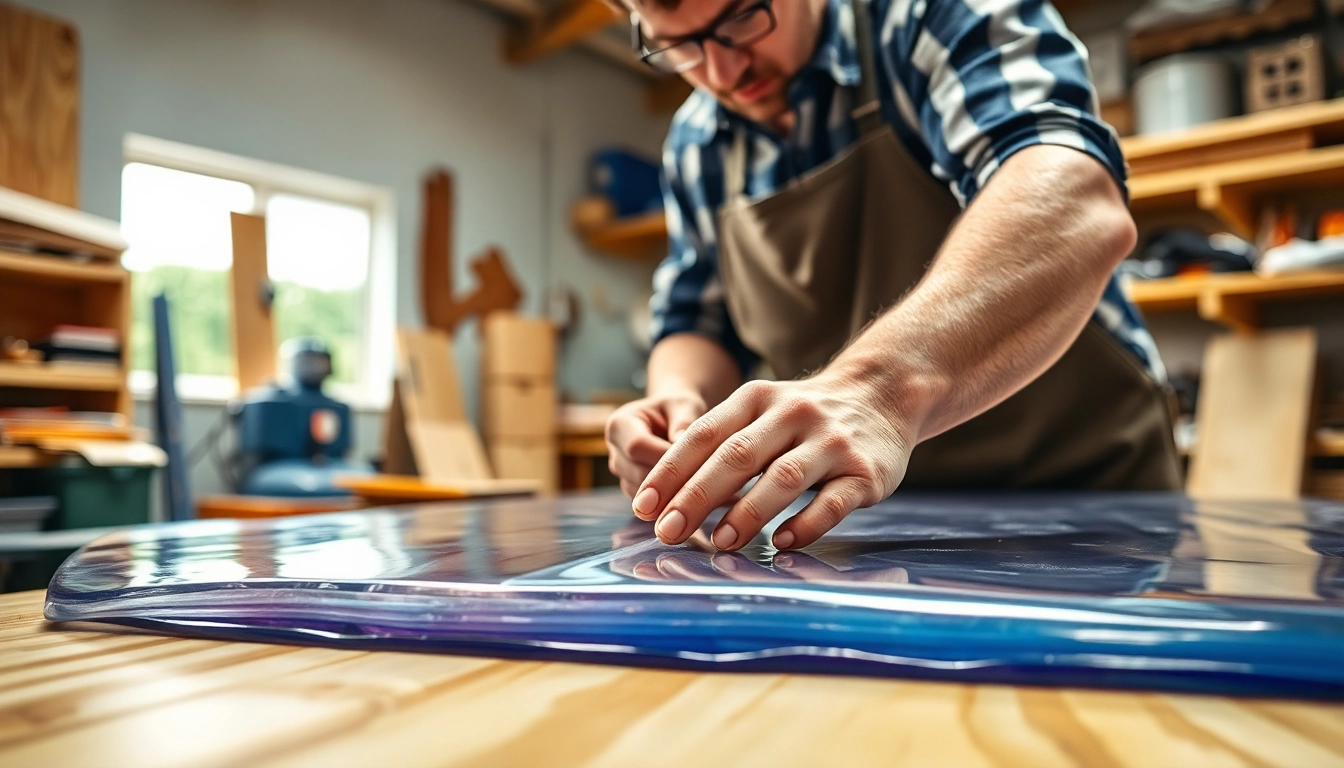Understanding Laminating Resin
What is Laminating Resin?
Laminating resin is a type of synthetic resin primarily used in the construction of composite materials. It serves as a binding agent, holding together layers of fiberglass or other fibers, creating a strong, lightweight finished product. This type of resin is formulated to cure into a durable material, making it ideal for various applications in marine, automotive, and industrial contexts. Laminating resin plays a crucial role in processes such as boat building, where strength and water resistance are paramount. Using laminating resin, craftsmen can achieve a high degree of surface finish while ensuring robust structural integrity.
The Composition of Laminating Resin
The composition of laminating resin can vary depending on its intended use, but it typically consists of unsaturated polyester or epoxy resins blended with a hardener or catalyst. Unsaturated polyester resin is commonly used for its balance of performance and cost; this kind of resin cures when combined with a catalyst, resulting in a hard plastic-like finish. Epoxy resin, on the other hand, is known for its superior strength and environmental resistance, making it a popular choice for demanding applications.
In addition to the resins, various additives are often included in the formulation to enhance specific characteristics, such as UV resistance, flexibility, or the speed of cure. Fillers may also be added to reduce costs and influence the viscosity and workability of the resin.
Common Uses of Laminating Resin
Laminating resin has a wide range of applications across several industries:
- Marine Construction: It is most notably used in boat building, where it forms the hulls of boats and ships, providing strength while remaining lightweight.
- Automotive Manufacturing: Many automotive parts, including body panels and interiors, are created using laminating resin, which offers the necessary strength without adding too much weight.
- Building and Construction: In the construction industry, laminating resin is used to create fiber-reinforced concrete products and other composite materials that require high resilience.
- Aerospace: Laminating resin is critical in the aerospace sector, being utilized in the fabrication of components that must adhere to stringent safety and performance specifications.
- Arts and Crafts: Hobbyists use laminating resin for artistic projects, mold-making, and custom furniture, taking advantage of its capacity for diverse finishes and durability.
Benefits of Using Laminating Resin
Durability and Strength
The primary benefit of laminating resin is its exceptional durability and strength. When properly applied and cured, laminating resin creates a composite material that resists wear, impact, and some levels of chemical exposure. This is especially crucial in high-stress applications such as marine environments, where the materials are subject to harsh conditions. Laminating resin’s properties also make it ideal for long-lasting performance and less frequent replacements, which can save both time and money over the product’s lifecycle.
Moisture Resistance
Laminating resin provides excellent moisture resistance, significantly enhancing the longevity of materials used in wet environments like boats, pools, and even roofing systems. It helps prevent water absorption, thereby reducing the risk of mold and degradation of the underlying structures. High-quality laminating resin formulations can withstand prolonged exposure to water, making them a reliable choice in applications where moisture is a constant factor.
Cost-Effectiveness
While the initial investment in laminating resin might be higher than some alternatives, the overall lifecycle cost is often lower. By providing long-lasting durability and resistance to environmental factors, projects utilizing laminating resin can benefit from reduced maintenance and replacement expenses. Furthermore, the efficiency gains from faster application processes and reduced labor costs add to its cost-effectiveness.
Application Techniques for Laminating Resin
Preparing the Surface
Proper surface preparation is critical for achieving an optimal bond with laminating resin. Surfaces must be clean, dry, and free of contaminants such as dust, grease, or oil. Sometimes, mechanical roughening, like sanding, can enhance adhesion by increasing the surface area. For best results, it is also beneficial to use a solvent wipe to remove any remaining residues.
Mixing the Resin Correctly
Mixing the laminating resin is a vital step in the application process. Following the manufacturer’s instructions is essential to ensure correct ratios of resin to hardener, as improper mixing can lead to incomplete curing or poor mechanical properties. Use a clean mixing container, and stir thoroughly to ensure an even consistency. A mechanical mixer can be a useful tool for achieving a homogeneous mixture, especially for larger batches.
Applying Laminating Resin Efficiently
When applying laminating resin, the technique used can significantly impact the finish and strength of the final product. Rollers and brushes are common tools for application, and it’s often advisable to apply in thin layers. This approach helps to prevent issues such as bubbling or sagging. Each layer should also be allowed to cure properly before applying the next to ensure maximum adhesion.
Safety Measures When Working with Laminating Resin
Personal Protective Equipment (PPE)
Safety is paramount when working with laminating resin due to its chemical nature. Users should always wear appropriate personal protective equipment, including gloves, goggles, and a respirator if working in poorly ventilated areas. Chemical exposure can lead to irritation or more severe health risks if proper precautions are not taken.
Ventilation Requirements
Proper ventilation is crucial while applying laminating resin, as fumes can be harmful when inhaled. It’s best to work in a well-ventilated space or use mechanical ventilation systems to ensure the air quality remains safe. Outdoor applications are preferable when possible, to further dissipate odors and fumes quickly.
Handling and Storage Best Practices
When handling laminating resin, storage practices can greatly affect the product’s shelf life and usability. Resins should be stored in a cool, dry place away from direct sunlight and heat sources. Containers must be tightly sealed to avoid moisture ingress, which could prematurely cure the resin or reduce its effectiveness. Always check expiration dates, and mix only as much resin as needed for the task at hand to minimize waste.
Troubleshooting Common Laminating Resin Issues
Dealing with Bubbles
Bubbles can be a common issue in laminating resin applications. To mitigate this, ensure that the resin mixture is thoroughly mixed and that air is not trapped during application. Using a vacuum chamber can help remove air bubbles before application. If bubbles appear during curing, gently applying heat with a heat gun can often help to release them. In some cases, minor bubbles can also be sanded down after the resin has fully cured.
Understanding Cure Times
Cure times for laminating resin may vary depending on the type of resin used, the ambient temperature, and humidity levels. Always refer to the manufacturer’s recommendations for accurate curing information. Testing small batches can help you understand how curing conditions can fluctuate. It’s also essential to avoid disturbing the resin during its curing phase to achieve a consistent and high-quality finish.
Fixed Errors in Laminating Resin Applications
Errors in the application of laminating resin can often be rectified. Common issues include uneven surfaces, poor adhesion, or under-cured areas. In such cases, sanding and reapplication of the resin can help fix surface imperfections. For adhesion issues, lightly sanding the offending area and reapplying with properly mixed resin generally resolves the concern. Always ensure to follow the proper curing protocol for best results after rectifications.



